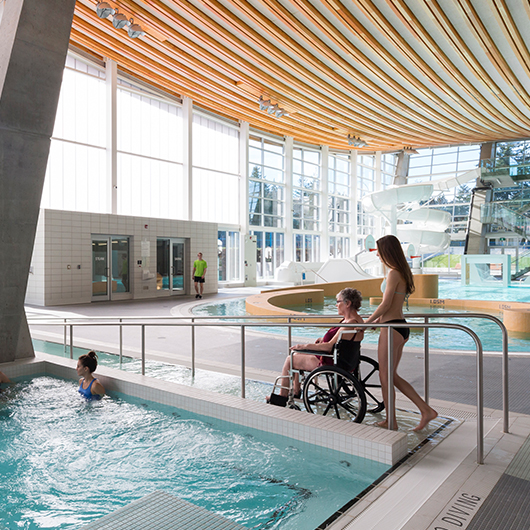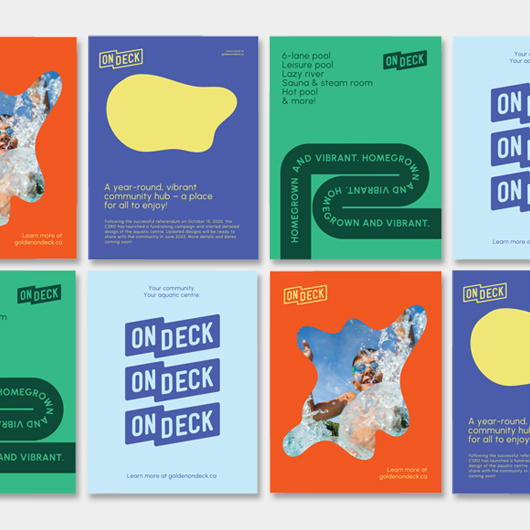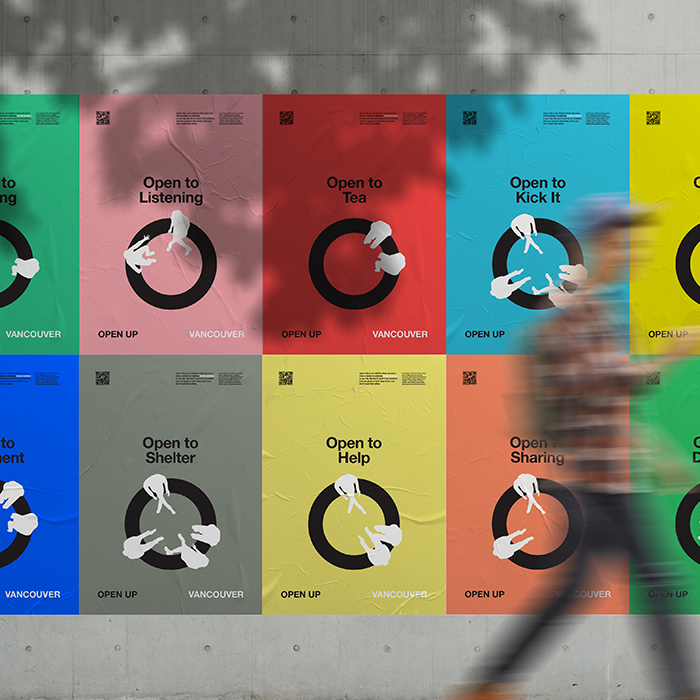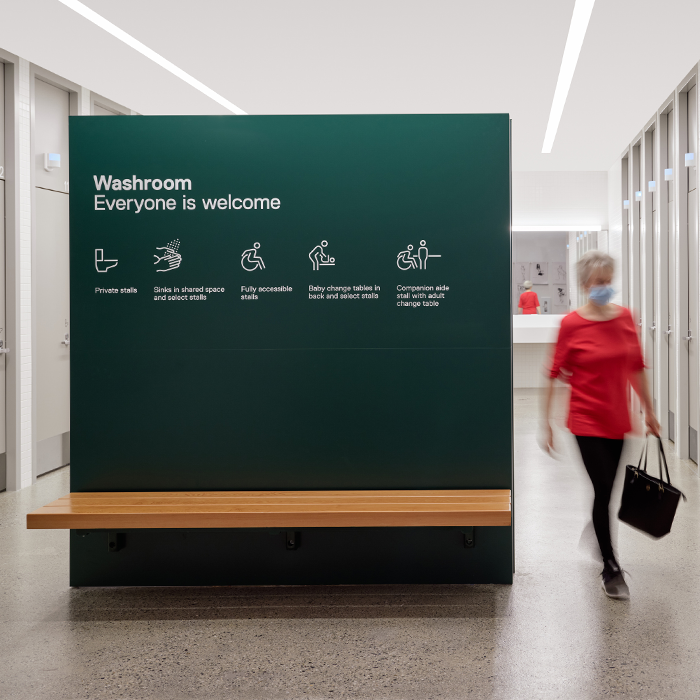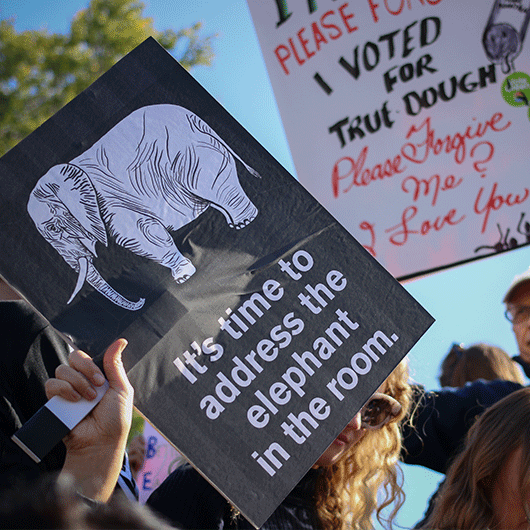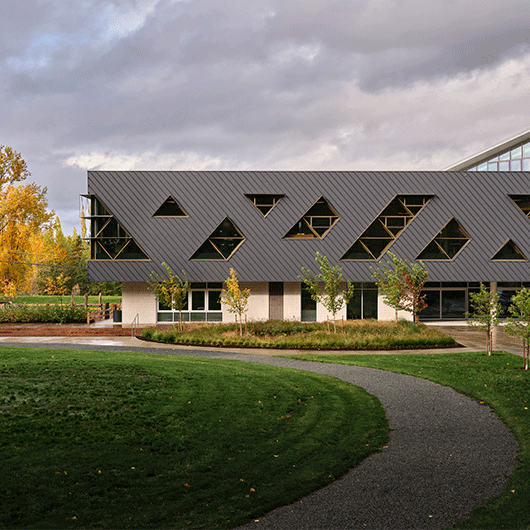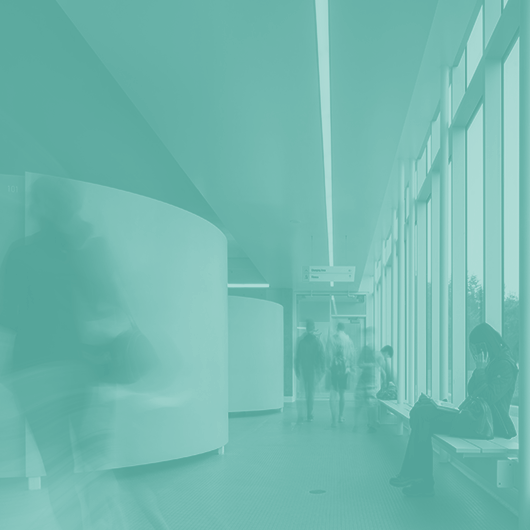
To celebrate ten years of our Tilt artist in residence program—and our 25th residency—we sat down with three hcma-ers to discuss what’s come to life and the many hands behind it.
Melissa Higgs, Principal at hcma, was key to the inception of the program ten years ago, while Steve DiPasquale, Director of Design, has been a longtime co-conspirator with the artists who’ve joined us over the years. Joining hcma in 2021, Alice Rooney, Senior Environmental Graphic Designer, has come to be a guiding hand in all things Tilt today. Together, the trio came together to reflect on the program’s history, what it’s meant to hcma-ers, and where it might be headed next.

What was the initial spark or thinking that led hcma to create an artist in residence program?
MH: The artist in residence program was the beginning of what would later evolve and expand into Tilt, our curiosity lab. At the time, we were thinking about how to fuel the latent curiosity within the firm. We’d seen examples of other residencies out in the world, and we wondered if we could offer artists something valuable, while exploring our own interests in different ways of practicing architecture and design.
Speaking as an architect, there’s often a bit of a misconception that what we do is art—or that our design process is free and flowing—in reality we are quite bound by technical, financial, and client requirements. Our ambition with the program was to explore how we could lean more freely into the “art” side of what we do, without the usual constraints. The idea of collaborating with artists—or even just overlapping with their process—was a way to better understand how they work. We know how we, as architects and designers, approach our projects—how do they do it? What does their creative process look like? How might we be inspired by it? How might we learn from it? And reciprocally, we hoped that artists might be curious about architecture and the way we work, too.
Today, do you still view the artist in residence program as something that expands on hcma’s core design practice?
MH: I think so. And maybe that’s a helpful way to frame our curiosities about starting the program. In other words, how might artists think about space, about the urban environment, about city-building? And could we—as folks able to hold those tools and make those decisions—learn more by infusing an artist’s way of thinking, their way of seeing the world, into the spaces we design? Could that inspire different ways of thinking about design, and how we go about tapping into our creativity?
“We asked: What's the reciprocal exchange? What do artists need most? How should we frame this? And how do we make it different from what's already out there?”
Melissa Higgs, Principal
How did the residency in its earliest form take shape?
MH: It took some experimentation initially. We weren’t naïve, but we were hopeful and optimistic. Early on, we met with Marie Lopes from the City of Vancouver, who works closely with artists through The Roundhouse. We asked: What’s the reciprocal exchange? What do artists need most? How should we frame this? And how do we make it different from what’s already out there?
What we realized is that often artists are looking for physical space to work, and by offering them space within our offices we could also offer artists insight into architecture and design. It’s a bit like a Venn diagram with an invitation to explore ideas that overlap in both our practices: social impact, community resilience, city building, inhabiting space. The invitation is to come into our space and understand how we work and think as architects, and in return, all 25 of our artists have generously invited us into their processes to help us learn and be inspired.
Central to the program is the idea of reciprocity and the flow of ideas between artists and hcma-ers. Why do artists want to work with architects?
MH: That’s a good question! But I'm often surprised by how much people want to work with architects. Without sounding grand, there’s a bit of mystery and cache around what architects do and how we do it. Along with the idea that you can enter our space—quietly observe (or engage!), use the workshops, be part of the team, see how we build models—I hope artists are inspired to gain a better understanding of both the complexity and the care involved in how our buildings are designed, how our cities take shape. Maybe they feel more empowered and want to influence some of the outcomes.
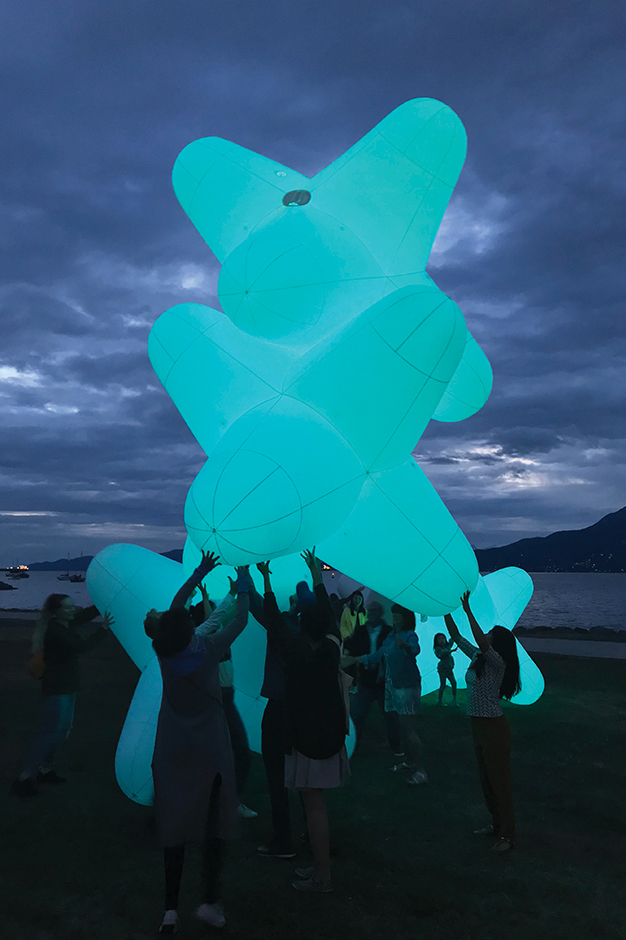
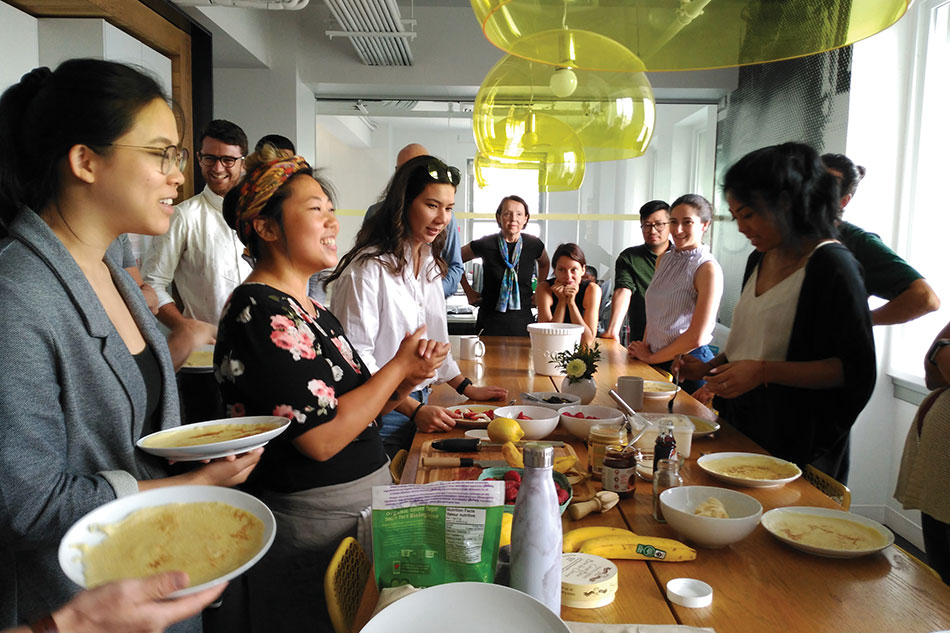
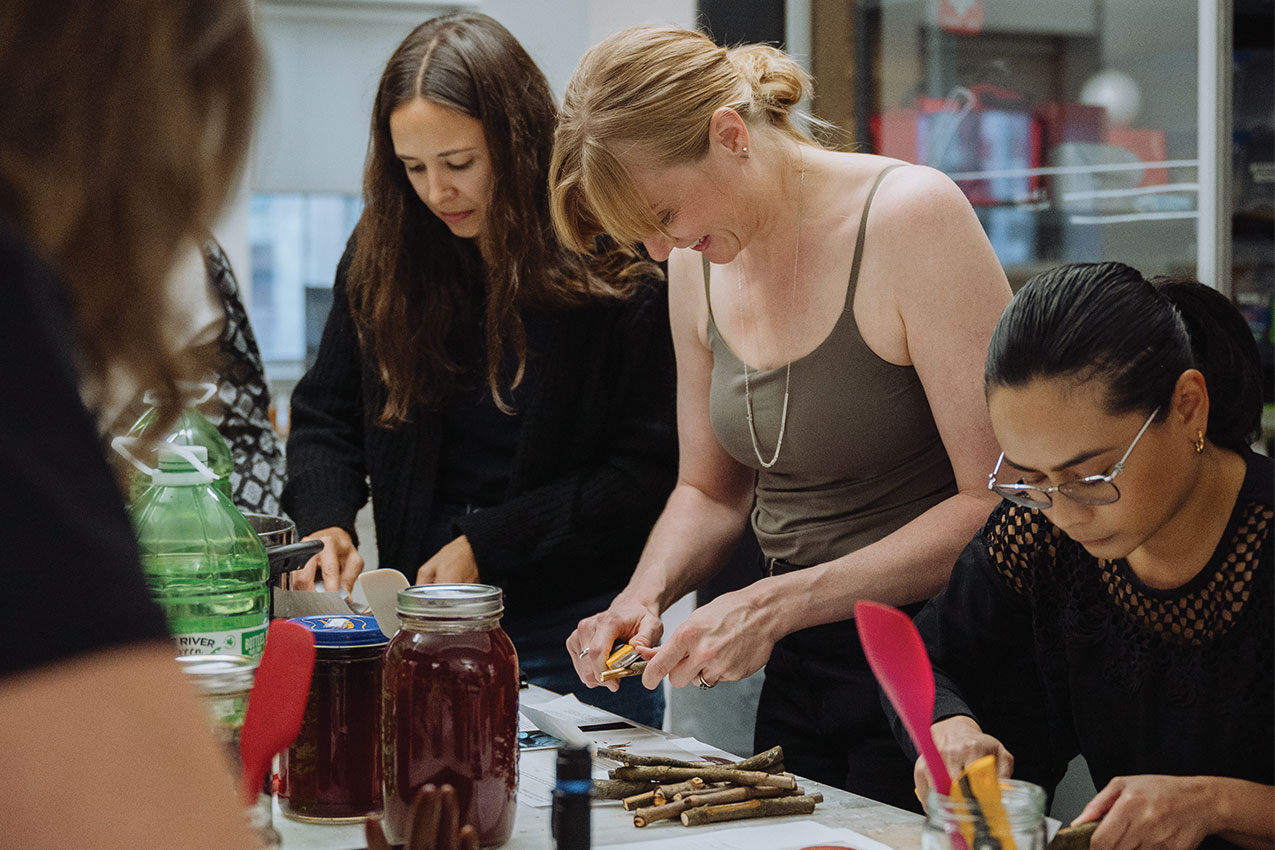
Alice, Steve, you've been closely involved in the program. What have you learned from the artists?
AR: I think I’ve learned that the high-level creative process—whether you’re an architect or an artist—follows many of the same stages. Ideation, aesthetic decisions, and steps that lead to a final outcome. Because we're on similar tracks, there’s a lot to gain from that collaboration, and the exchange that happens when creative brains and creative voices come together.
Ultimately, no creative process works best in a vacuum. Inviting someone into a big, diverse team like ours creates an opportunity for everyone to have meaningful conversations that push forward their work.
SD: As they say, walking a mile in another’s shoes can take you places you never would’ve arrived at on your own. On so many of the residencies, you get to a moment of thinking, “That’s really interesting. I never would have thought about it that way or used that material in that way or fill in the blanks here.” That’s when you know there is something valuable happening.
From the beginning, the residencies have embraced art in its broadest form. So many different mediums: dance, food, sound… Why is that openness a priority?
AR: Something that really sticks with me about the hcma ethos is the value we place on different ways of thinking and different voices. When you bring those perspectives into this lab-like, process-driven brief we offer artists, that’s where the magic happens. It’s like a controlled experiment, but each new person who enters changes the outcome. That’s what feeds the exchange. The success of it is wrapped up in all of us working on a theme that originates from within the hcma psyche. Then we invite in artists of all mediums to disrupt it in meaningful ways.
MH: The diversity in art forms is so true to the work we do as architects. People experience buildings in different ways. Some through sound, others through texture. Some notice composition and color balance. Some see the big picture, while others experience buildings through tiny, tactile moments, the feeling of walking through a space. To me, artists and designers are looking at the world in all these different ways. As architects, we need to expand our thinking to reflect that—to consider the full range of ways people experience space, cities, buildings.
I think of Annabelle Choi bringing food into her residency. At first, it might seem like food has little to do with architecture. But food brings people together. And while we don’t taste buildings, we do smell them. There are all these other sensory dimensions to how people experience space. That’s what our artist in residence program taps into and why it inspires us across all these different scales and diversity of experiences.
“At first, it might seem like food has little to do with architecture. But food brings people together. And while we don't taste buildings, we do smell them. There are all these other sensory dimensions to how people experience space.”
Melissa Higgs, Principal
Can you think of a moment during a residency that directly impacted a project or influenced our day-to-day work—whether or not it changed the final outcome?
MH: When Heather Myers came in with her choreography background, the building was already nearly complete, so it didn’t change that specific project. But it profoundly impacted me. Her belief that dancers experience space differently—that their bodies interpret buildings and surroundings in a unique way—really stuck with me.
It felt reassuring, like something I already knew deep down. It’s how I design and think about space: I know bodies experience it not just through the mind or lived experience, but also physically—through movement. Even the title Solid Liquid Ether captured that idea beautifully: that space is shaped by materials and decisions that are tangible and solid, but that it also dissolves and changes as you experience it, and inhabit and move through it.
Of course, as architects we’re always designing for bodies in space. But her perspective made me slow down and ask: how might the body feel in this space? It changed how I think about light, shadow, and scale—from constrained to expansive.
AR: Architectural forms are designed with so much intention and hope that people will engage with them in all these diverse ways. Heather's work was this amazing proof of how those interactions can be unexpected, and delightful.
MH: And it’s a bit like choreography, right? When we design, we are imagining someone coming into a building in a certain way—and what is their experience? That’s choreography—the different ways people move through space.
It loops back to process. We're not looking for a tangible outcome, necessarily. But the kinds of questions artists ask themselves—the ideas they explore, how they find inspiration—really impacts us. It expands our idea of where inspiration can come from, and the kind of rigor with which we ask questions about a design problem.
That’s another reason why the process matters. It’s not about a specific outcome or something tangible, I think it’s about how it changes us. And by changing us, and potentially how we design, it leaves a little fingerprint each time—shaping who we are and how we think about design.

What is an example of a residency that changed us?
SD: I always think of two. One is Katherine Soucie and her piece Cast ON, Cast OFF. She explicitly said, “I never, ever would have done this if I didn't come here and meet all of you.” I always have that front of mind when people are talking about the program.
The other is Jax. Alex Beim came with a specific, predetermined idea. To which we responded, “What if we did something even more ambitious?” And then we had a big jam, and Jax came about. He had expectations. We had vague expectations. And something emerged that none of us could have imagined or predicted—it only happened because we came together and made it happen.
“He had expectations. We had vague expectations. And something emerged that none of us could have imagined or predicted—it only happened because we came together and made it happen.”
Steve DiPasquale, Director of Design
In 2020, we asked art consultants Pennylane Shen and Michael Schwartz to help us review and formalize the program. What prompted us to take this step?
MH: The firm had grown, our ambitions had grown, and the program had been successful. It wasn’t a little thing anymore. We wanted to formalize it, and ask questions like: Should we be giving more money? Are we compensating the artists well? Now that we were reaching a certain scale, we wanted to take responsibility and make sure that we delivered the program in an ethical, appropriate way. So, we said “Let’s stop pretending that, as a group of architects, we know what we’re doing here! It’s time to bring in professionals who work with artists to help us set up a more rigorous process.”
There was also a feeling of pressure. We were asking ourselves: should we be limiting this to artists who might need this opportunity more, to give them a stage? I remember thinking, we need to make sure we’re inclusive about this. And Pennylane and Michael’s recommendation was: Just know who you are and make the ask clear to artists. There are already specific programs aimed at marginalized communities, and you’ll never be as good or as rigorous as them. Just do what you’re doing, but make sure artists know what that is. Lower the barriers for access. Make the ask simple, clear, straightforward.
SD: The other thing we were trying to solve was the chaos of it. Everyone would be busy—and suddenly we’d realize, “Oh shoot, we need an artist in here.” One residency would be seven months long, another would be two weeks. We had no consistency, no structure. We didn’t even know how long it should be—three months? Seven?
The consultants came in and said, “How about this? One, two, three residencies a year, a quarter off in between. Done.” Just like that. Ten weeks per residency. It gave us a framework. Before that, it was like running a design competition with no deadline. We were just feeling our way through it. Looking back, part of that shift was to relieve some of the pressure on us and create something more sustainable.
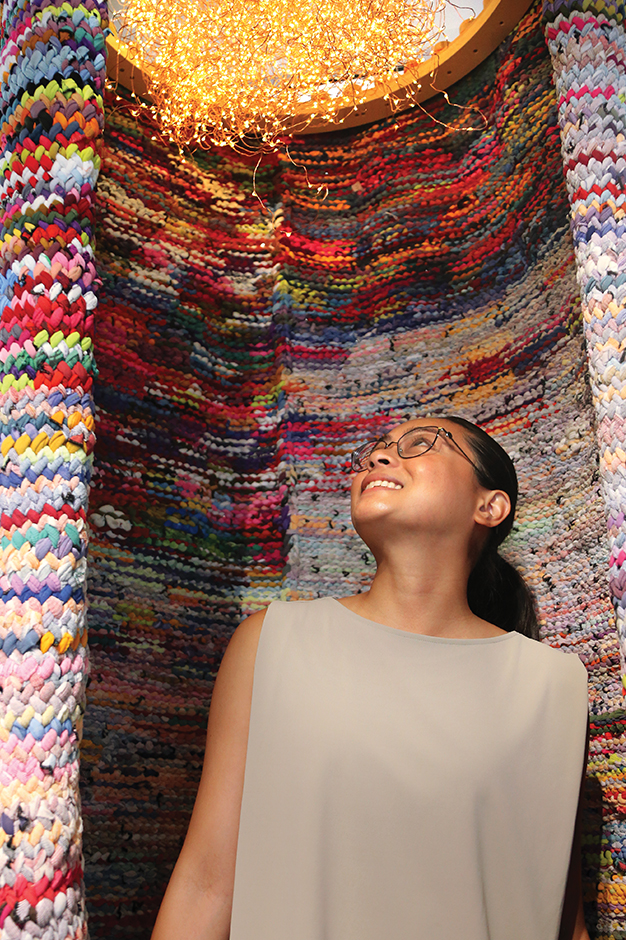

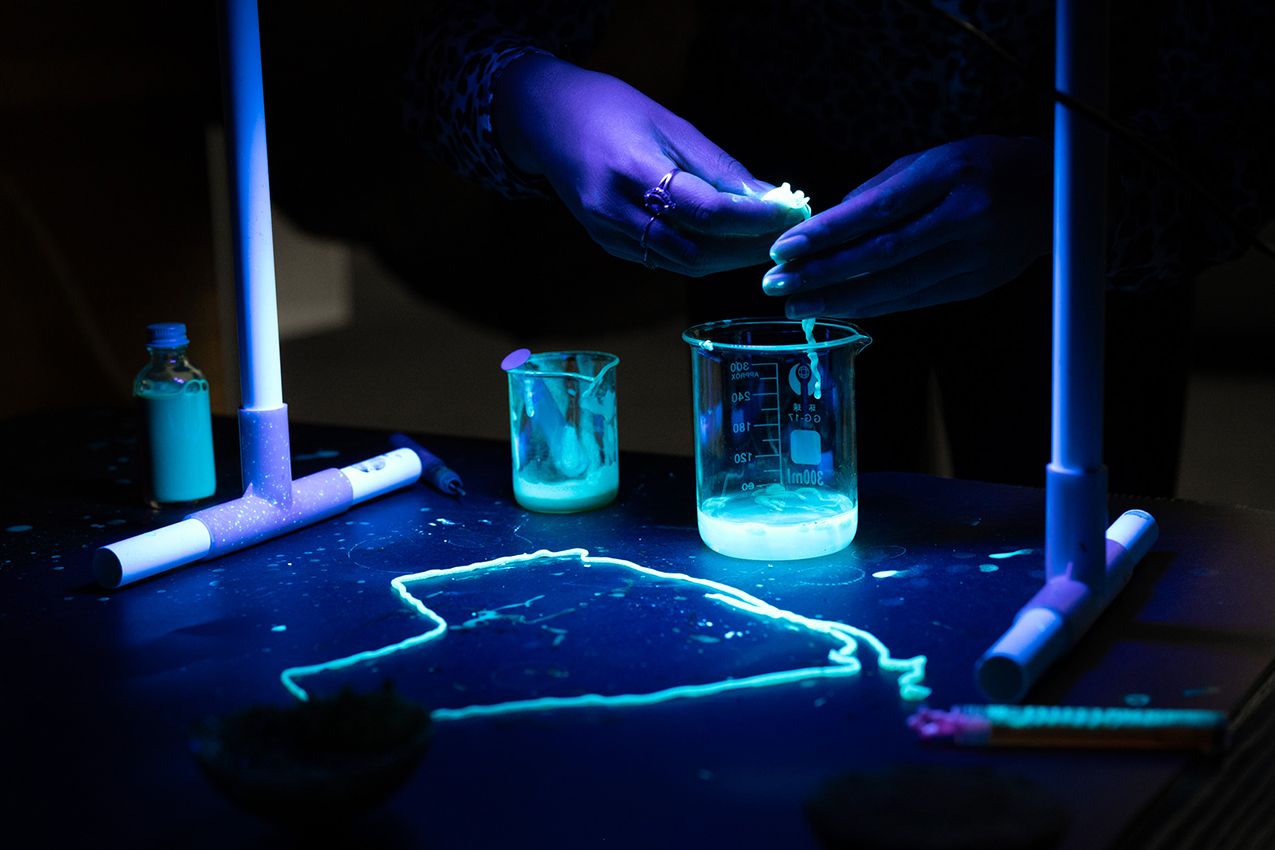
Is that when we started to incorporate themes into the residencies?
MH: Yes. Michael and Pennylane brought structure, but the introduction of themes was our way of shaping the experience. I remember us struggling with that. Do we need a theme? Does a theme make sense? But it was our way of continuing to offer some influence and to tie the exploration back to hcma and our particular curiosities, rather than simply saying, “Here’s X amount of dollars, this much time, do whatever you want.”
How are the themes created?
AR: Every year, we put out a call to anyone at hcma who wants to help shape the new theme and join the program’s curatorial committee. We start with some broad questions—what’s on our minds, what are we thinking about—and then gather prompts, both visual and written. From there, it becomes this kind of ping-pong conversation where ideas expand through osmosis, until something clicks and feels true to where we’re collectively at. A smaller team distills this broad thinking into themes, and then someone shapes them into poetic prompts, and then the whole office votes on their preferred theme for the year.
The themes help us be considered and make sure that everyone at hcma has a voice in shaping the program and guiding what the artist might produce. But it also helps enormously with the practicalities of determining which artists get selected out of the hundred that don’t. If it were a completely open call with no theme, it would be difficult for us to discern and provide equal opportunities for everybody involved. It really does help to create a level playing field for everybody.

How has the program and various residencies changed over the years?
MH: One measure of success is how the program evolved from something initiated and somewhat controlled at the Principal level, to something more open, where Principals now engage in the same way as everyone else. The artist in residence program has been embraced by the team. There are some key players, but it always shifts. Ten years in, it’s like we planted a seed, and it’s grown into something amazing—something that’s continuing to grow and bear fruit. For the first little while it was tended by a few, and now it's nurtured by the many.
SD: And we got feedback that some people felt a bit confused—and even a little resentful—that the program seemed like something only a few people got to take part in. With Pennylane and Michael, that was another question: How do we lateralize this?
AR: Now, everyone at hcma is invited to take part—and there’s something democratic about that. People take real ownership, which is key to its longevity. You can engage when the time feels right or pass for now and join in next time. It keeps the thread going and shifts the focus away from, “this residency was a success, this one wasn’t,” toward a larger, ongoing narrative—one where we are the consistent thread throughout.
MH: One of the major outcomes for us is community building within the firm, which I don't think was part of the initial intent. Yes, the artists influence us, shape our work, and change us—and that’s amazing. But it’s also become a powerful way to bring us together and build internal connections.
“One of the major outcomes for us is community building within the firm, which I don't think was part of the initial intent. Yes, the artists influence us, shape our work, and change us—and that's amazing. But it's also become a powerful way to bring us together and build internal connections.”
Melissa Higgs, Principal
What's the future of the artist in residence program? Where is it headed?
AR: The program has grown a lot in 10 years. We now have artists based out of our Vancouver, Victoria, and Edmonton studios, so that’s three residences a year, and next year we’ll be adding a fourth residency in our new Calgary studio. Still, it remains a magical program we get to experience as hcma-ers, and I would love to see us find more opportunities to share that outwardly. For something like the Jax piece, for example—it would be amazing for others to engage with it and learn from it the way we do. It’s a continued pursuit, to find ways to collaborate and advocate for artists through our work.
SD: Agreed, and with the courage and the capacity to tweak and pivot as culture changes, as we change. If a new idea or inkling emerged, there will always be a forum to say, could we tweak it this way? Could we do something different?
MH: Yes. And ultimately, we don’t have the answer. Just that we carry on. It's like the residencies themselves—it will change as the artists change. I don't think we have a master plan, nor should we.
But leading with our values feels more necessary now than ever. As we enter a difficult and unknown future, some of the things we hold dear are going to be challenged. In society, artists are so often at risk. So, we need to double down. We need to keep being brave. We’re more committed to this than ever before, because it's more and more important that artists be given time, space, and influence.
